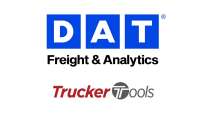Chief Scientist, DAT
Viewpoint: Transportation Procurement Involves Evolving Processes

[Stay on top of transportation news: Get TTNews in your inbox.]
From a carrier’s perspective, the way shippers procure transportation can seem arbitrary, with limited thought or imagination. Run a bid and pick the lowest rates. In reality, their approach has become far more sophisticated. Shippers’ transportation procurement processes are evolving quickly, and they’d like more carriers to keep up.
Before the pandemic, most shippers ran an annual bid event at roughly the same time every year. The first quarter was a popular time, as it’s a slow period for many industries. But procurement timing has changed since the pandemic. Nowadays, shippers will run bids anytime it makes sense. Because negotiating power shifts between the buyer (shipper) and the seller (carrier) every one to three years, shippers want to know when and how to engage with carriers in the bid process.
To gain better visibility into this shift, it’s helpful to watch two indicators — the New Rate Differential and the Spot Premium Ratio — which were developed for and are used in our DAT iQ analytics business.
The NRD is the ratio of the average of newly established contract rates compared to the average of the rates being replaced. Tracking NRD over time helps the shipper see the market’s overall movement.
The SPR is the ratio of average spot rates to average contract rates, and it signals imbalances in supply and demand. Far from arbitrary, shippers constantly gauge where the market is heading so that they can time their bids just right. Or, if they do adhere to a regular bidding schedule, they know what to expect in the market when they run their bid.
What to Procure
Shippers have three challenges in determining what type of capacity to secure.

Caplice
First, transportation is a derived demand, so any forecast for truck volume is based on other forecasts in an organization, such as those prepared by marketing or sales. A transportation forecast is only as good as the forecast for the underlying products.
Second, transportation buyers forecast volume at a lane level. A forecasting rule of thumb is that the more disaggregated a forecast is, the worse it will be. Also, any lane-by-lane volume forecast makes significant assumptions about operational decisions that will be made throughout the year.
These two challenges help explain why most shippers establish their forecasts for the upcoming period based on their most recent history.
Finally, in addition to the forecasting challenges, shippers must determine whether to include a lane in a bid. Not all lanes within a shipper’s network are the same. They differ in total expected volume, consistency, strategic importance, level of service expectations, etc. Sophisticated shippers conduct a segmentation analysis to identify lanes that should be handled differently.
For example, analysis at DAT and the Massachusetts Institute of Technology Center for Transportation & Logistics has shown that lanes with 12 or fewer loads moved in the previous year have a less than 50% chance of having any volume in the next year. Even if the volume materializes, the probability that it will fail in the routing guide and go to the spot market increases to more than 40%.
How to Procure
Once they have segmented their network, shippers can establish a portfolio of procurement relationships, including dedicated, contract and spot.
In a dedicated relationship, a shipper controls the day-to-day utilization of leased or owned assets. This is essentially the “make” in the classic make-buy decision and is ideal on lanes with consistent, balanced volumes that fully utilize trucks and drivers.
Contractual relationships are a traditional approach in which the price is binding, but the volume tendered by the shipper and the capacity provided by the carrier are not. Annual contracts work best on those lanes, with sufficient volume for the carrier to rely on and have a truck available when needed. One load per week or every other week is a standard threshold.
A spot or dynamic relationship occurs when the carrier and the price are determined at the time of tender. The spot market is a good fit for lanes with very low, inconsistent and/or sparse volumes. Shippers have recently established direct application programming interface connections with carriers to enable more controlled dynamic relationships.
Want more news? Listen to today's daily briefing above or go here for more info
This “relationship portfolio” engine can provide a more comprehensive understanding of truckload procurement.
During the pandemic, shippers learned hard lessons about the cost of inefficient and unproductive lanes. For most, the days of running an annual bid and picking the lowest rates are over. They’re being deliberate about when, what and how to procure their truckload capacity. Imaginative carriers can help.
Chris Caplice, Ph.D., is chief scientist at DAT Freight & Analytics and senior research scientist at the Massachusetts Institute of Technology Center for Transportation & Logistics. He is the founder and co-director of the MIT FreightLab research initiative.




